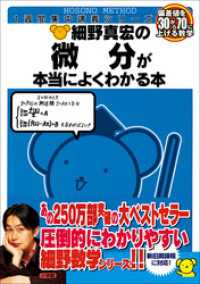- ホーム
- > 洋書
- > ドイツ書
- > Humanities, Arts & Music
- > Music
- > musical equipment
Description
(Text)
Etwa drei Jahre nach Erscheinen des zweiten Bandes seiner "Années de Pèlerinage" (Italien) fügte Liszt dieser Sammlung noch einen Anhang bei: das Triptychon "Venezia e Napoli". Hierfür überarbeitete er zwei von vier Stücken, die bereits 1840 nach einer Italienreise entstanden waren, und gruppierte sie um eine Adaption des Gondellieds "Nessun maggior dolore" aus Rossinis "Otello". Besonders die furiose "Tarantella", die den Schlusspunkt hinter die beiden eher gesanglichen Stücke "Gondoliera" und "Canzone" setzt, ist aus dem Klavierrepertoire nicht mehr wegzudenken. Mit Erscheinen dieses Supplements liegen sämtliche Werke aus dem Umkreis der "Années de Pèlerinage" im Henle-Urtext vor.
(Table of content)
Venezia e Napoli Gondoliera Canzone Tarantella
(Text)
About three years after the publication of the second volume of his "Années de Pèlerinage" (Italy), Liszt added a supplement to this collection: the triptych "Venezia e Napoli".
For this he reworked two of four pieces which he had already composed in 1840 after a journey to Italy, grouping them around an adaptation of the gondola song "Nessun maggior dolore" from Rossini's "Otello". It is diffi cult to imagine the piano repertoire without the furious "Tarantella" in particular, which brings this supplement to a close after the two rather lyrical pieces "Gondoliera" and "Canzone". With the publication of this supplement all works pertaining to the "Années de Pèlerinage" are now available in Henle Urtext._
(Table of content)
Venezia e Napoli Gondoliera Canzone Tarantella
Quelque trois ans après la parution du deuxième volume de ses «Années de Pèlerinage» (Italie), Liszt ajoute encore une annexe à ce recueil: le tryptique «Venezia e Napoli». À cette fin il reprend deux des quatre morceaux déjà composés en 1840 à la suite d'un voyage en Italie et les groupe pour une adaptation du chant de gondelier «Nessun maggior dolore» de l'opéra «Otello» de Rossini. En particulier la «Tarantella» endiablée qui clôt les deux pièces plutôt vocales «Gondoliera» et «Canzone» ne peut plus être exclue du répertoire pour piano. La publication de ce supplément complète la série des oeuvres rattachées aux «Années de Pèlerinage», publiées en édition Urtext Henle._








